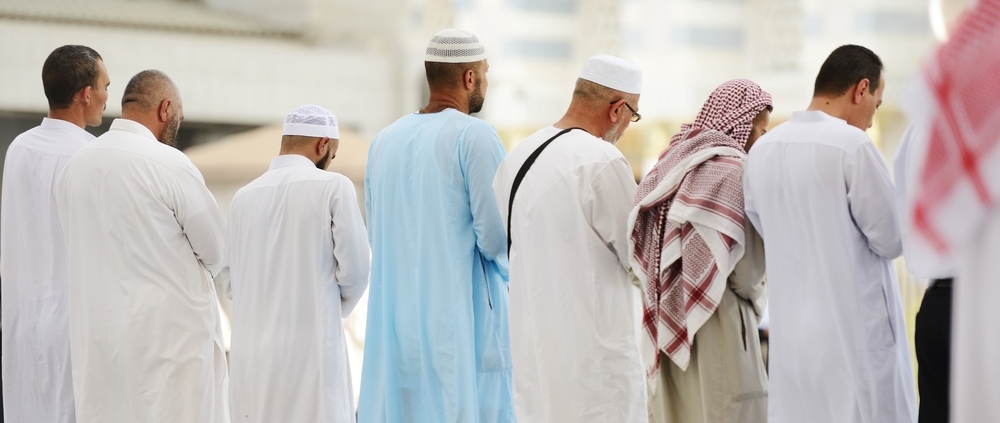What Should the Latecomer (Masbuq) Do If the Imam Performs Sajdat al-Sahw?
Hanafi Fiqh
Answered by Ustadh Sufyan Qufi
Question
1. What should the latecomer (masbuq) person do if the Imam in the last rak‘a does Sajdat al-Sahw: stand up or go after Imam? If “stand up” is the answer, and the person unaware of the rule went after the Imam, is his prayer still valid?
2. Some Hanafi scholars in my locality say that after we reach Imam in his last rakat, in our 1st rakat without Imam, we should read tashahhud, then we perform 1 or 2 rak‘as depending on the prayer, without tashahhud in between but only at the end. Is this the correct position? Are there other positions in Hanafi school?
3. Is it true that when we find the congregation in ruku’, we first do takbir, then shortly join hands, and then join the congregation in ruku’, or is there no hand-join?
Answer
In the name of Allah, Most Compassionate, Most Merciful,
1. When the latecomer (masbuq) joins the Imam in the last cycle (raka’a) of the prayer and the Imam performs the prostrations of forgetfulness, the latecomer has to follow the Imam and perform the prostrations with him. [Shurunbulali, Nur al-Idah]
The reason for this ruling is that it is incumbent on any followers to follow the Imam, and the latecomer is from them. [Shurunbulali, Maraqi al-Falah]
The latecomer has to wait for the closing salams of the Imam after the prostrations of forgetfulness before starting to make up for what he has missed. [Tahtawi, Sharh ala Maraqi al-Falah]
2. After the final salam of the Imam, the latecomer should make up the remaining of his prayer in this fashion:
- When it comes to recitation, he starts from the beginning of the prayer, opening glorifications (Thana) included.
- As for the sittings (Tashahud), the latecomer should perform them so that the sittings are performed every two cycles while taking into account the cycles performed with the Imam. [Haskafi, Dur al-Mukhtar]
For example, if the latecomer has only prayed one cycle with the Imam in the Isha prayer, then the latecomer will have to sit right after the first cycle performed alone because he has to take into account what he has already performed with the Imam. He has prayed one cycle with the Imam, after which he has added another cycle alone: he has thus already performed two cycles. It is time now to perform the first sitting. He gets up after that, performs the last two cycles without any sittings between them, and then he performs the final sitting.
For a detailed answer, please see: The Rulings Related to a Latecomer & a Note on the Durr Al-Mukhtar.
3. We have to perform the opening Takbir standing because it is an external condition for the validity of the prayer. Just like facing the Qibla, covering one’s nudity, or performing wudu when one is in a state of ritual impurity. [Shurunbulali, Maraqi al-Falah; Ibn ‘Abidin, Radd al-Muhtar]
After performing the opening Takbir, the latecomer has to follow the Imam. [Shurunbulali, Maraqi al-Falah]
Thus, it would be a mistake to delay joining the Imam in the bowing (ruku’) by taking the time to join one’s hands because the Imam is not standing.
And Allah knows best.
Wassalam
[Ustadh] Sufyan Qufi
Checked and Approved by Shaykh Faraz Rabbani
Ustadh Sufyan Qufi is an advanced seeker of knowledge, originally from Algeria, who grew up in France. He began searching far and wide for answers to the fundamental questions of life and was disappointed at the answers he found. Then he connected with various traditional teachers and gradually connected with SeekersGuidance. He embarked on his journey of learning through the various teachers at SeekersGuidance, including his mentor, Shaykh Faraz Rabbani. He studied numerous texts in Islamic Law, Theology, Hadith, and other areas with Shaykh Faraz Rabbani and other teachers, including Shaykh Abdurrahman al-Sha’ar, Shaykh Ali Hani, and others. He is an active instructor at SeekersGuidance and answers questions through the SeekersGuidance Answers Service.
